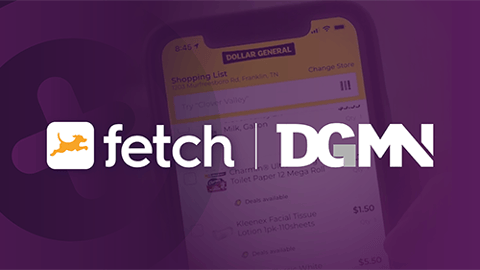The Quest to Measure In-Store Retail Media
In-store retail media isn’t a one-size-fits-all endeavor, and that applies to measuring its effectiveness. Just as the type and placement of retail media in the physical store is crucial, determining the performance of such programming involves thoughtful planning interpretation and context.
That was a key takeaway from a session at the recent Retail Media Summit in Rosemont, Ill., hosted by the Path to Purchase Institute (P2PI). A panel that included a grocery marketing executive, media agency pro and tech solution provider shared candid insights on how to deliver full-funnel results for retail media executed at brick-and-mortar locations.
[RELATED: How Albertsons Is Reaching Price-Conscious Consumers]
That side of the business is definitely growing, as in-store retail media is nearly a $1 billion channel with potential to grow several times beyond that in the coming years. “The in-store space is really one of the few places left that we as Americans go every single week, sometimes more than once a week,” said Marlow Nickell, CEO and co-founder of in-store digital ad company Grocery TV. “Retail media is an incredibly exciting category right now for advertising, but most of that has been focused offsite because from an infrastructure standpoint, it's so much easier to build that. But as in-store starts to become developed and that infrastructure gets deployed, I think you're going to see more and more excitement from brands to be able to activate.”
As a less mature retail media segment, the need for some kind of measurement is clear as brands want to gauge their return on investment. “Some brands have not quite bought into in-store yet and we know we have our work cut out for us to provide them with real measurement to lean more into consistency across digital tactics,” remarked Kathryn Mazza, SVP, chief marketing officer and president of RedMedia at Hy-Vee, Inc. adding that the Iowa-based company has seen strong results with compelling case studies for brands.
Tech is advancing at a pace where such proof of performance is improving. “We’re on a path to where in-store is going to have all the same closed-loop capabilities that you have for offsite,” reported Nickell.
In today’s retail environment, brands and grocers can maximize results from their screens and other dynamic tools by focusing on time and place. “As a marketer, we want to really focus on brand building, and we talk a lot with clients about the creative that they're using. Don't just repurpose something from another channel. There are a lot of cool contextual opportunities that you can lean into,” Nickell pointed out.
Mazza agreed. “One of the biggest things that I talk to my team and even advertisers about is the quality of the content on the screens. And it's not just quality in how the creative looks, but also quality of the placement,” she declared, citing an example. “If I’m in the checkout area and you show me the new Peanut Butter & Jelly M&M’s, it's very impulsive and I will reach over and buy it. But if you show me a 55-pound bag of dog food, am I going to get out of line, go get that dog food and lug it back up? You have to catch me in the right moment of the store in the right area.”
When it comes to assessing results of well-placed, enticing retail media tools in the store, measurement is more than data on incremental sales lifts. “There are powerful stories that could be made there, but I don’t want to fall down the trap as we often do with retail media overall is that if you have perfect measurement, then it will unlock dollars,” said Lee Dunbar, SVP of head of retail media at the media agency Starcom, adding that there is a certain level of give and take on key performance indicators.
Nickell noted that other purchase drivers come into play at the store, too, including inspiration from various offsite elements. “It’s complex, and with this push forwards performance, everybody tries to take credit for whatever they can take credit for. I’ve always been the biggest fan of ‘Let’s get back to brand building – where are the best places for you to build your brand?’” he said.
Added Mazza: “I think it depends on the circumstances and the product, but that’s no different than all of our digital marketing as well.”






